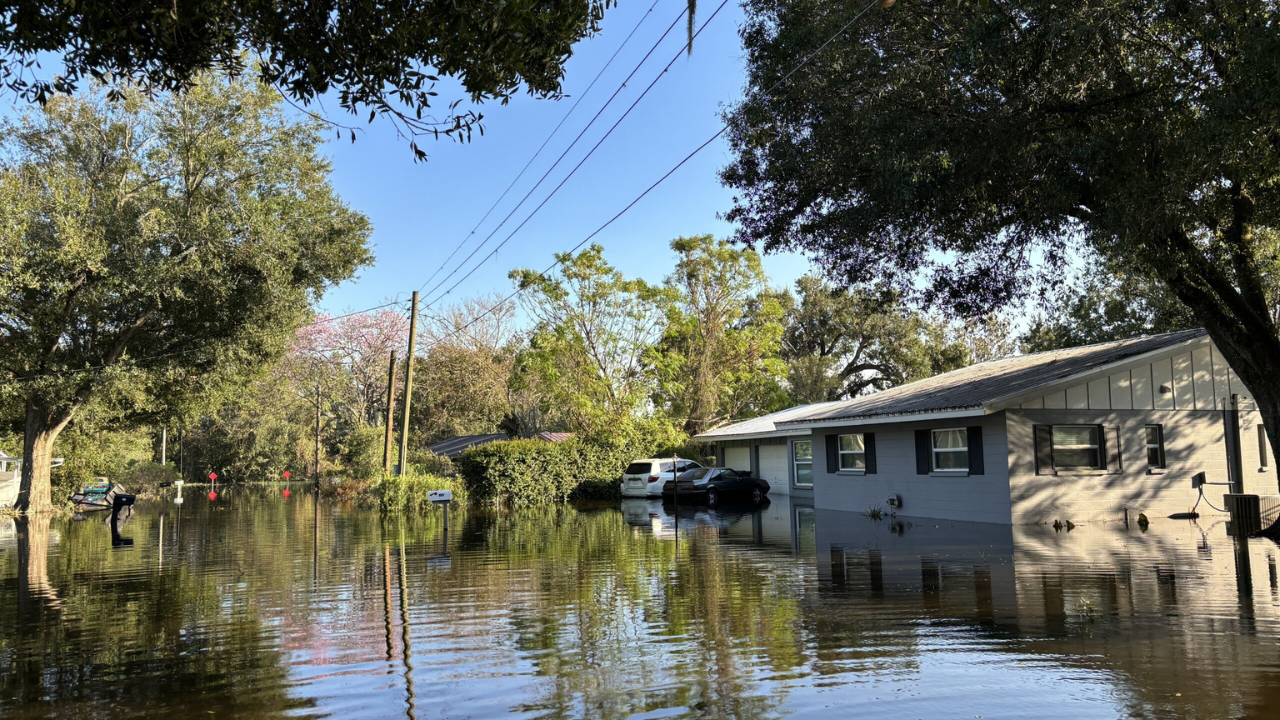LAKELAND, Fla. — Rain used to be calming. But now, for neighbors like Nicole Aldahonda-Ramirez, who live near Lake Bonny in Lakeland, each drop carries a memory.
“I’m constantly looking out the windows to make sure it’s not flooding,” Aldahonda-Ramirez said.
For Teri Rodriguez, who lives in the Bonny Shores Mobile Home Park, each drop is also a reminder of how vulnerable they still are.
WATCH: Study blames Lake Bonny flooding during Milton on 'very inadequate' infrastructure
“Even just regular afternoon thunderstorms like we’re getting — it’s like, you know, heart palpitations and flashbacks,” she said.
Dozens of homes near Lake Bonny and Little Lake Bonny flooded during Hurricane Milton.

Homeowners like Rodriguez and Aldahonda-Ramirez were caught completely off guard.
“We escaped through that window,” Aldahonda-Ramirez said, as she gestured toward the window at the front of her home on Honeytree Lane. “There were three adults and three dogs.”
Days ago, the City of Lakeland released a new study analyzing what went wrong and what could be done to prevent future flooding along Lake Bonny.
The report also confirms what Aldahonda-Ramirez feared. According to the study’s executive summary, the current flood control system is “insufficient” for storms like Hurricane Milton.
“I would definitely use it as validation,” she said. “It makes us seem less crazy.”
According to the study conducted by AECOM, the current pumping system is essentially limited to roughly 10 cubic feet per second of pumping capacity to mitigate flooding.
“Substantial increases in pumping capacity are needed to mitigate flooding, with required rates ranging from 50 cfs for a 10-year event to 400 cfs for a 100-year event,” the report concludes.
Read the Lake Bonny Watershed Assessment
Lake Bonny Watershed Assessment-text Only (1) by ABC Action News on Scribd

To improve the system, the study offers three options:
- Make improvements necessary to pump water to Lake Parker “at a higher rate,” and then pump from Lake Parker to Saddle Creek Park, a former phosphate mine.
- Make improvements necessary to pump water from the existing Lake Bonny pump station to Saddle Creek Park.
- Make improvements necessary to pump water from Lake Bonny to a nearby wetland (north of Colonial Ave.) before releasing the water slowly into Lake Parker.
Aldahonda-Ramirez has her preference.
“To me, the one that makes the most sense would be the phosphate mine, because it has so much availability for water,” she said.
However, a fix won’t happen overnight.
As the study makes clear, each solution has pros, cons and complexities.
“There is no straightforward solution,” concluded Kevin Cook, a spokesperson for the City of Lakeland. “Each option outlined in the report involves complex considerations and will require coordinated decisions from multiple jurisdictions and agencies, including the City of Lakeland, the Polk County Board of County Commissioners, the State of Florida, and the Southwest Florida Water Management District.”
Cook said the city will thoroughly evaluate the report’s findings before moving forward.
Courtney Kraft, another Lake Bonny flood victim, remains skeptical that a solution will be implemented.
“I’m not holding my breath that anything will actually happen,” she said.
Until a solution happens, the rain will continue to carry a weight that she and her other neighbors can’t shake.
“It puts a pit in my stomach,” she said.

'I’m just scared!' Insurance denials halt chemotherapy treatment for FL woman with 'aggressive' breast cancer
Months have passed since Mary Barnes had a double mastectomy to treat an “aggressive” form of breast cancer. Now her treatments have been put on hold because of insurance denials.





